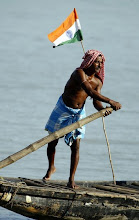LOOK EAST POLICY
Look-east policy was launched in 1992 just after the end of the cold war, following the collapse of the Soviet Union . After the start of liberalization, it was a very strategic policy decision taken by the government in the foreign policy. The policy was given an initial thrust with the then Prime Minister Narasimha Rao visiting China , Japan , South Korea ,Vietnam and Singapore and India India
It is only with the formulation of the Look-East policy in the last decade (1992), India
Although it had traditionally supported Burma 's pro-democracy movement for many years, India India signed trade agreements and increased its investments in Burma ; although private sector activity remains low, India
India has also established strong commercial, cultural and military ties with the Philippines, Singapore, Vietnam and Cambodia.[2] India signed free trade agreements with Sri Lanka and Thailand Japan and South Korea South Korea and Japan remain amongst the major sources of foreign investment in India
While India has remained a staunch supporter of the "One China" policy and recognized the People's Republic of China on the mainland over the Republic of China authorities on Taiwan, it has, nevertheless, pursued a policy of increasing engagement with the island.India has stepped up engagement with East Asia fueled by its need for cooperation on counter-terrorism, humanitarian relief, anti-piracy, maritime and energy security, confidence-building and balancing the influence of other powers, notably China. Driven by the fact that more than 50% of India's trade passes through the Malacca Strait, the Indian navy has established a Far Eastern Naval Command off Port Blair on the Andaman and Nicobar Islands. India has also been conducting joint naval exercises with Singapore (SIMBEX) since 1993, with Vietnam in 2000 and has engaged in joint patrols with Indonesia in the Andaman Sea since 2002. Japan and India were also members of the tsunami relief regional core group in the Indian Ocean in 2004 along with Australia and the United States
Advantages of the policy
* 1991 was a turning point in India India 's main focus was on the Soviet Union because of which ties with the other major Asian powers like China and Japan India 's inward-looking orientation disconnected it from the neighborhood to the East, kept it apart from the economic growth of East Asia . By the turn of the 1990s, India India
* The Look-East policy has been given a significant thrust since the beginning of this century. Now India India 's Look East policy has a new dimension — the development of India India 's search for a new economic relationship with South East Asia is no longer driven by considerations of globalization, but to facilitate development of the Northeast by increasing its connectivity to the outside world. Instead of trying to isolate the Northeast from external influences, as it had done in the past, New Delhi is now recognizing the importance of opening it up for commercial linkages with South East Asia .
* Increased economic integration with Asia has helped India India can import the goods from other countries which can be produced by other countries at a lower cost then India India can export those goods for which India India and East Asia countries .Due to this there is a Substantial potential of Asian Economic Integration in helping Asia resume a high growth path.
East Asia's Strengths India's Strengths
1) Electronic equipment Computer Software
2) Heavy engineering Light engineering and pharmaceuticals
3) Product development and marketing Process development
4) Underutilized capacity in construction Huge potential demand
* Look east policy has helped India in strengthening its place in the global economy and gets a better deal in its interactions outside the region. America India India India economy is getting integrated with the Asian economy, so India gets support from Asian countries which have increased India
Short comings in the policy
* The Look East policy did not find Japan on its radar and failed to improve India Japan Japan
* India has entered into a number of pacts, agreements and FTAs but its record for implementation of such accords has been poor as can be seen from the follow up of the Indo-Thai FTA and CECA with Singapore
The reason for poor implementation of the pacts, agreements and FTAs
* The Indian industry's doubts about its competitive efficiency.
* Indian industry does not want competition at home
* Indian industry scared of cheaper exports to India
Suggested future framework
* The rise of China's economic potential and the resultant influence on this region should not deter India, as the region is looking for an alternative in India because of its fair practices and peace loving nature. India is preferred over China by many countries because India India
* Each nation has its own characteristics – some are supportive of India , some are predominantly Muslim, some are economically more developed then India , some are underdeveloped and one is a close neighbor influencing the security of India India should tailor the bilateral relations with every country in different way to suit the requirements of that particular country and that of India
* ASEAN and EAS hold great promise for India India
* CMI and emerging FTAs / RTAs between Asian countries provide foundations for a broader and more ambitious initiative to take the existing India-ASEAN relationship to a higher level, like an Asian Economic Community, which constitutes ASEAN, China , Japan , Korea and India












No comments:
Post a Comment